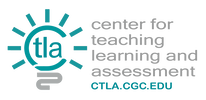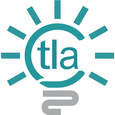|
If you are like me, when you first began using Canvas, the fact that items you might assign your students to engage with appeared in so many places within the platform was pretty confusing. You probably thought to yourself, "why can’t I just do everything in one place"? However, as I began to work with Canvas more and more I was better able to understand the logic of its structure and now I would like to share what I have learned with you! The most important thing to understand about Canvas is that there is a place that “holds” your content and places where your content “lives.” You can create things in all these areas, but the content you create “lives” in its eponymously named area. Modules live on the Module Index Page, Pages live on the Pages Index Page, Assignments live on the Assignment Index Page etc.
But I see you in my mind scratching your head going, “but Julie, what do mean when you say that the assignments I create “live” on the Assignments Index Page, I can create assignments right from my Modules, don’t those assignments “live” there?" To clarify, when I say that your Assignments “live” on the Assignment Index Page and Quizzes “live” on the Quiz Index Page. What I mean is that each eponymously named content area (Index Page) is the only place within Canvas besides the content item itself (page, assignment, quiz etc.), where you can entirely delete that corresponding type of content. You can only delete a specific assignment if you are engaged with that specific assignment in Canvas and then select "Delete" from its dropdown menu on the right or if you are on the Assignments Index Page and you select "Delete" from the dropdown menu next to that specific assignment’s name. The same holds true for Pages, Discussions, and Quizzes, you can only delete a specific Page, Discussion, or Quiz while you are engaged with that specific item or from the Index Page named after its content type. Thus, Pages, Assignments, Discussions, and Quizzes do not “live” in your Modules. If you “Remove” a Page or an Assignment from a Module it does just that, it “Removes” it from the Module but does not “Delete” it. To delete it, you must interact with the item itself or with the item on its Index Page. Knowing this about the structure of Canvas should help you make your Canvas course easier to navigate for your students. If you structure your course using Modules, you can hide the other content areas from your students. As long as your content items (assignments, quizzes, discussions etc.) and modules are published, your students will be able to access them as content contained within the modules you have created without needing to access the Assignment Index Page, Discussion Index Page, or Quiz Index Page, etc. directly. This will make navigating Canvas easier for you students because they will be able to find everything they need to successfully complete the course in one place (The Modules Index Page). Further, when you create a module, using the module's settings, you can require students to engage with your modules and the content within them in a specified order. For more about this nifty feature of Canvas Modules check out this Help Guide. To recap: Modules are containers that an instructor should use to organize their course content and create a learning path for their students. Modules should make your course easily navigable and the relationships among the various pieces of your course content, and the outcomes your content is designed to achieve, more transparent. When you add an item (Assignment, Page, etc.) to a Module you are adding a link to the content item. The content item itself “lives” on whatever Index Page is associated with the item’s content type (Assignment, Page etc.).
0 Comments
Your comment will be posted after it is approved.
Leave a Reply. |
Categories
All
Author
Awesome people who want to help you do awesome stuff in the classroom! Join the conversation here or in our Facebook Group: CGCC Center for Teaching, Learning, and Assessment Archives
October 2023
|
TOPICS |
SUPPORT HoursMonday - Thursday
8am - 5pm Friday 8am - 4pm |
|
© Chandler-Gilbert Community College, 2020.



 RSS Feed
RSS Feed
